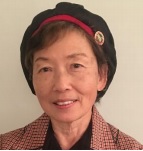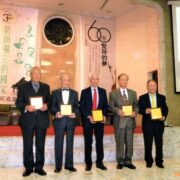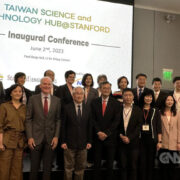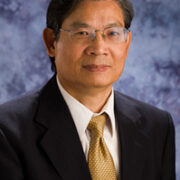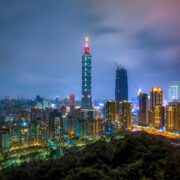回顧休城生涯五十多年
作者 呂理順
在一九六三年一月,有個台灣青年人飛抵Hobby Airport, 在出口張望找尋東方人的面孔,很快就看到惟一的東方人-張燦鍙兄,他是我二哥在台大化工系的同學在Rice University(U.)進修博士學位,以後受他多方的照顧。張兄學成離開休城後,熱心台獨運動,並回台灣做了台南市長。另有一位同住的朋友是廖明徵兄,他在Baylor U. 研讀薬學,以後對治癌藥品的研究有成,至今八十多歲仍在研究中。我於Rice U.修完土木碩士學位後,展開我在Houston五十多年的生涯。以下講些Houston 的老故事。
當時在Houston的新華人來自台灣的很少。記得大約在Rice U. 有八位,Houston U. 有五位,Medical Center有四位。我在1965年結婚晚宴在郭江海博士家開派對,聯同請來的菲律賓護士,也只有二十多人。那時沒幾家中餐館,窮學生們只能自備餐飲,結婚日一早我的新娘就忙得團團轉。過幾年認識到闕文榮醫師,我們就常去他家聚會,不久就開始了台灣同鄉會,選他做第一任台灣同鄉會會長。到了1970年代學生人數孟增,再到1980年代,台灣移民及做生意的更多湧入Houston地區。我們眾多台美人,成立台灣语文學校,台灣人傳統基金會,Houston台灣人活動中心,台灣人信用合作社等等,真是一片盛世景觀。
我剛來到Houston時,本市並非繁華的大城市,Medical Center是綠草如茵,只有幾棟大醫院及Baylor U.。石油工業尚在陸地開採階段, 雖然在灣區有煉油廠林立,但在市區只有管理人員的辦公大樓,Humble (今Exxon/Mobil) Building 是最高的大樓,在六十八層有瞭望臺。當時NASA剛成立,是新建城市及社區的亮點。
因有NASA的成立,最先建設的州際高速公路就是從Hobby Airport到NASA這一段(I-45 South)。其後開始I-10 East及I-45 North. 再後開始Southwest Freeway (US 59) , I-10 West及US 59 North等等。開始時高速公路交叉奌只是上下平面通過,等到1980年代立體電腦繪圖技術發展成功後,才有現今的立體交叉環流道。
在城心區有個George R. Brown Convention Center,這是由慈善家Mr. George R. Brown所捐赠的。他曾在Rice U. 念過書,後來畢業於他州。學成後他回來Houston跟他哥哥Herman及嫂夫人娘家Root合資開了營建公司-Brown & Root, Inc. 開始只有一部騾車運載重物,修補街道,慘澹經營,哥哥及嫂嫂都退股了。但是這位新年青老板,勤奮不懈,開始接些石油工廠生意,並擠身石油俱樂部(Houston Petroleum Club) 做創會會員。經常去俱樂部吃午餐,同石油公司高级人員邊喝酒邊談生意,握個手就搞定鉅額工程契約。他在郵政總局開的第三號信箱是個大倉庫, 可以開卡車進入的。他的公司在第二次大战時為政府製造木殼高速砲艇,就是President Kennedy在太平洋英勇作戰駕駛的那種。有了成功的政府工程契約,他的公司參與越南戰爭時諸多建設工程,像NASA的初期開拓建設也是他公司承辦。在60年代末期,他的公司名列美國營建工程公司的前五名。
我選擇Rice U. 念書,是因為學校有對全部學生免學費的奬助金,有南部的哈佛之名聲;又知道這地方沒有地震很合我父親的意念,再則天氣也暖和,我就申請來了。我在夏天想找個工作貼補費用,有人告訴我去找Brown & Root, Inc. 一定會有工作, 果然一試就採用了,原來是Mr. Brown對Rice U. 學生特別疼惜。我的職位是高级繪圖員,起薪是每小時$2.60, 月薪約五百元,當時算是高薪工作。於是我在這家公司勤奮不懈的工作了三十七年。我的專業是土木結構設計,在這多年中為石化工業貢獻良多。有在德州建石化工廠,在Arkansas建造紙廠,在Louisiana建煉油廠及石化工廠,但設計最多的是外海鑽油平台。2000年退休後,接受舊同事的招聘,開始參加深海浮動式鑽井平台的新工程,直到老KK時才完全退休。
在1960年代末,美國在墨西哥灣開始外海採油事業,我公司是美國二大外海營建公司之一,因工作很急切,經常每週工作55小時。對工程師來說外海探油是新技術,在設計運算非得用新發明的電脑不可,每年都有新技術發現,所以我樂此不疲的工作了50年。因為是新技術,當時外國開始開採外海石油,常請我們公司試範去傳授技術,得以出國查視。我所經辦的外海工程有固定平台在六十至一千英呎水深,浮動平台至五千英呎水深。平台建設地奌,包括墨西哥灣,Alaska,中東波斯灣,歐洲北海,南美洲的Venezuela,Colombia & Trinidad,澳洲,印度洋及菲列賓海灣。這讓我有機會到各國看看,瞭解世界各地文化,真不愧此生也。
在1970末期,因為美國北方鋼鐵、汽車及航工業的停滯,很多外地人蜂湧而來Houston尋求工作,造成房屋不足,房地産生意與隆,很多台灣同鄉集資合夥投資房地產,為的是三、五年可以翻倍。可惜好景不長,到了約1985年,因為石油景氣衰退,很多人失業後搬離Houston,而使大部公寓成蚊子戶。因很多投資人本身工作也不碓定,不能持續付銀行贷款而大批放棄房地產,使Houston成為哀鴻遍野的地方。
但是房地産的降價並非完全的喪失,台灣人傳統基會就在當時買下台灣人活動中心的房產,很多華人教會也有了自已的地方。更有甚者,百利大道從八號公路以東的數段街道,當時被棄之如敝屣,荒涼颼颼的,幸有外地亞裔及加州的投資人湧入,發展成為今曰繁盛的新華埠(New Chinatown)。
90年代以後,Houston的形像大有進展,Texas Medical Center成為世界有名的地方,電子工業也有成就,石化業穏定運作,其他事業也都欣欣向榮, 外地人持續搬入,成為美國第五大域。而大量的亞裔及中國人湧入休城,華埠樣貌大變,華人銀行林立,簡體字報紙充拆,華人教會及寺廟到處都是。
歷盡滄桑,我己經完全退休了,住在糖城一個湖濱小屋,常在湖畔散步或騎腳踏車觀償風景,也常去四哩外的兒子家看二個孫兒們。我們夫婦, 身体康健,常去教會敬拜讚美神。感謝神的恩典, 使我有個安逸快樂的退休生活。
以上是我本人對居住休士顿多年的感言。願你們也可以像我把休士頓當做故鄉吧!
祝住在休士顿的台美人幸福及平安!
Recalling My Houston Tidbits from 1963 to 2015
By: Li-Shun Lu
In January of 1963, a young man from Taiwan flew into the Hobby Airport of Houston. He was looking for an Oriental face. Then, he spotted the only Oriental young man, George Chang, who was the classmate of his second older brother in Taiwan University’s Chemical Engineering Department. George was a PhD degree candidate at Rice University. He helped me in many ways during my early residence in Houston. After leaving Houston for LA and New York, he involved himself into Taiwanese independent movement and was once the Mayor of Tainan City in Taiwan. Another room mate I had at the first apartment was Mr. Ming C Liao who was student of Baylor University. He later became a renowned anti-cancer medicine researcher.
I finished a Master of Science degree at Rice University in the summer of 1965 and started my homestead in Houston that would last for more than 50 years. Below are some old stories about myself and Taiwanese Americans in Houston.
In early 1960s, there were very few new immigrants from Taiwan in Houston. I remembered that there were about eight students at Rice University, five students at University of Houston, one student at Baylor University and three medical staff in the Medical Center. In 1965, when I had my wedding party at my friend Dr. Kio’s home, I could only invite twenty-some Oriental people including Korean and Filipino nurses. There were only a few Cantonese restaurants in downtown, so we poor students decided to prepare foods for the party ourselves. My bride, Cheryle, got up early and stayed busy all day long preparing for the party. After a few years, we got acquainted with Dr. Chiu who was an anesthesiologist at the M.D. Anderson Hospital. Those Taiwanese students used to be invited to his home to gather for fellowship. Very soon, we elected him to be the first president of the Houston Taiwanese Association. In the 1970s, the number of students from Taiwan increased rapidly. In the 1980s, Taiwanese immigrants, mostly business people, entered the Houston metropolitan area in a big way. The Taiwanese American people started to form many organizations, such as the Taiwanese Association of America Houston Chapter, the Houston Taiwanese School of Language and Culture, the Houston Taiwanese Credit Union, and the Taiwanese Heritage Society of Houston which built the Taiwanese Community Center at 5885 Point West, Houston, TX 77036. Taiwanese communities in Houston were in a prosperous period.
In the early 1960s, Houston was not a prosperous city. The Texas Medical Center was covered by vast lawns and there were only a few buildings for large hospitals and the Baylor College of Medicine. The oil drilling activities were mainly onshore. Although there were several petrochemical plants along Galveston Bay, there were only a few high-rise buildings in downtown Houston. The Humble (currently Exxon/Mobil) Building was the tallest building and there was an observatory at the 68th floor. At that time, NASA was just established and new communities started to grow around it.
The first section of the interstate highway built in Houston was from Hobby Airport to NASA. Then, Houston started to build the sections of I-10 East, the Southwest Freeway (US Highway 59), I-10 West, and US Highway 59 North. In the beginning, all highway intersections were just straight over or under passes. Until in 1980, the three dimensional computer graphic technologies became more matured, then, the multi-level curved interchange began to show up in Houston.
In downtown Houston, there is the George R. Brown Convention Center. This center was donated by the Houston philanthropist Mr. George R. Brown. He studied at Rice University for a few years and then graduated from another university with an Engineering degree. He came back to Houston and formed a construction company called Brown & Root, Inc. His partners included his brother Herman Brown and members of the Root family, who were related to Herman’s wife. In the beginning, the company worked on street construction with a donkey-drawn wagon. During the Recession period, his brother Herman and the Root family withdrew from the company. But, the young George was full of energy and hope for future success. He started to take orders from the oil and gas industries. He became the founding member of the Houston Petroleum Club. He regularly had lunch with the oil company executives at the Houston Petroleum Club. There, he would make big deals with them with just a hand shake. His post office box, No. 3, at the downtown post office was so big that he sent in trucks to pick up his mail. His company helped the government build wooden speed gun boats, such as the one used by President John F. Kennedy when he served in World War II. With successful government contracts, Brown & Root, Inc. took major contracts to build military bases in Vietnam and developed NASA facilities in the 1960s. In the late 1960s, his company was listed in the top five construction companies in the USA.
I came to Rice University for my graduate study, because the school would grant free tuition to all admitted students. And, it had a reputation as being the Harvard University of the South. I also knew that Houston is not in a seismic zone which would ease my father’s worry. The weather in Houston is also mild. In the first summer time, I found a job at a consulting firm near the Rice University campus as a draftsman. In the second summer, the firm referred me to Brown & Root, Inc. where the Rice students would be welcome because Mr. Brown particularly liked to help Rice University. I started as a Senior Draftsman and got paid $2.60 per hour. A salary of $500.00 per month was a high paying job in 1964. So, I worked for this company diligently for the next 37 years until I retired at age 64. My specialty was in civil and structural engineering and has contributed greatly to the oil and gas industry. I have designed and constructed many petrochemical plants in Texas, Louisiana and Alabama. Also, I worked on paper mills in Arkansas. But after 1977, the major work was done for offshore platforms in the Gulf of Mexico and other parts of the world. After my first retirement in the year of 2000, I accepted consulting work in deep sea floating platform projects. When I finally completely retired, I was 77 years old.
In the late 1960s, American oil companies started drilling oil and gas in the shallow parts of the Gulf of Mexico. Brown & Root, Inc. was one of the top two pioneering companies in offshore platform work. The work load was urgent and demanding. We regularly worked 55 hours per week or more. The offshore oil drilling was a new technology. It required use of the newly developed computers. New techniques were being developed year by year. Therefore, I could work in this field tirelessly for 50 years. In the 1970s, many foreign countries started to develop the offshore oil fields. They would ask American firms to provide consulting services. So, I had many opportunities to visit overseas locations. I designed offshore platforms including fixed platforms, in water depth from 60 to 1,000 feet, and floating platforms, in water depth up to 5,000 feet. The locations of the platforms include the Gulf of Mexico, Alaska, the Middle East, the North Sea, Venezuela and Trinidad, Australia, the Indian Ocean, and Philippines.
In the late 1970s, because the steel, automobile and aeronautical industries were in the decline, many out of state people moved into Houston area to seek jobs. There was a severe shortage of housing. The real estate business was booming in Houston. Many Taiwanese people formed partnerships to invest in large apartment projects. They hoped to get big profits in three to five years. But, the good time did not last long. About 1985, because the petrochemical industry met a severe recession, many workers lost their jobs and left Houston. Many apartments became empty without tenants. The apartment projects could not sustain the huge loan payments and became defaults. It was a very sad era indeed.
However, the down turn of the real estate value was not all bad news. The Taiwanese Heritage Society of Houston was able to buy property for establishing the Taiwanese Community Center. Many Chinese churches also bought properties to have their own place to worship God. Especially, along the Bellaire Blvd from Fondren Road to Kirkwood, there were many abandoned shopping centers. Asian investors, many from other states or countries, came to Houston and started prosperous businesses catering to Asian immigrants. This district is now called the New Chinatown. It contains many shopping centers, restaurants, apartments, houses, churches, temples, banks, and clinics.
After the 1990s, Houston had progressed significantly. The Texas Medical Center expanded to become a world renowned medical complex. The electronic technology business developed. And, the aerospace and petrochemical industries continued working. Commercial businesses also were doing well due to good employment opportunities. There are many Asian immigrants who have moved into the New Chinatown district. There are so many banks catering to the Asian businesses. Many newspapers are published in the simplified Chinese characters. Many Chinese churches and temples have established in the New Chinatown district.
After enduring over a half century, I am finally retired. I moved to a lake side home in the Telfair Planned Community in Sugar Land, Texas. I go to a gym regularly for exercise. I also take walks or ride a bicycle around neighborhood lakes to stay healthy. I can also visit my son’s home located only 4 miles away and play with my grandsons. We enjoy our retired life and thank God for giving us a comfortable and happy retirement life.
Above are my tidbits about Houston. I wish that you all can make Houston your sweet second home.
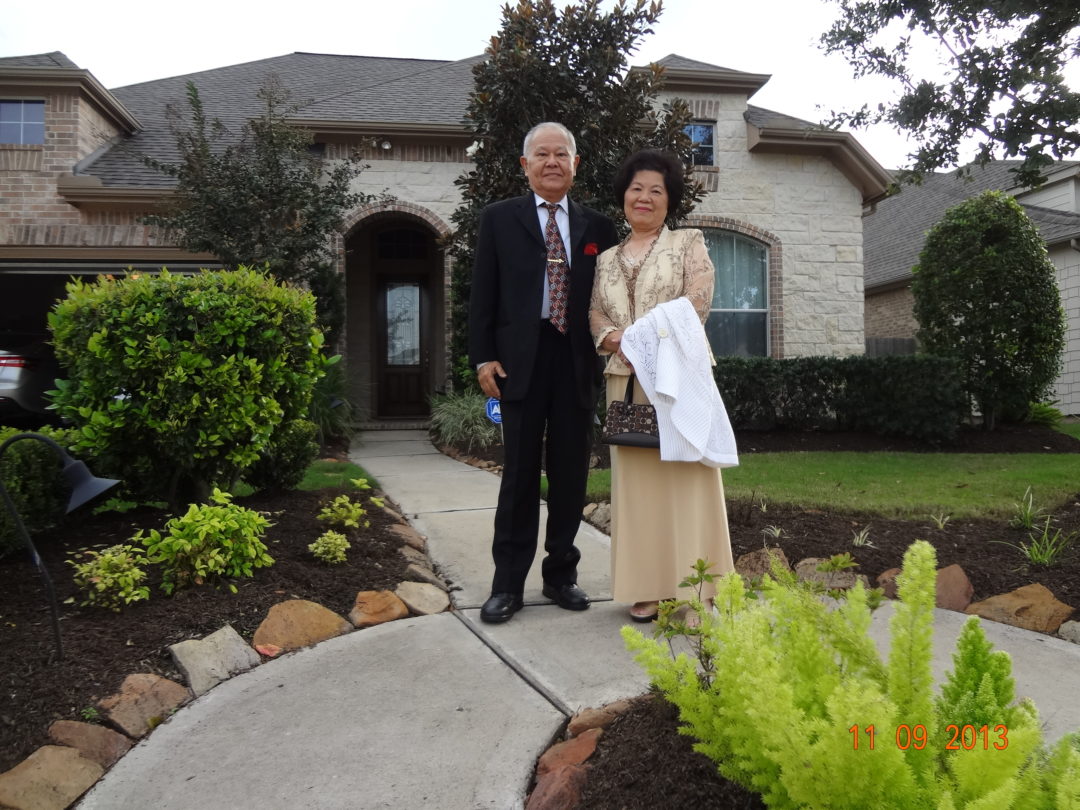
Family pictures taken in front of my home.
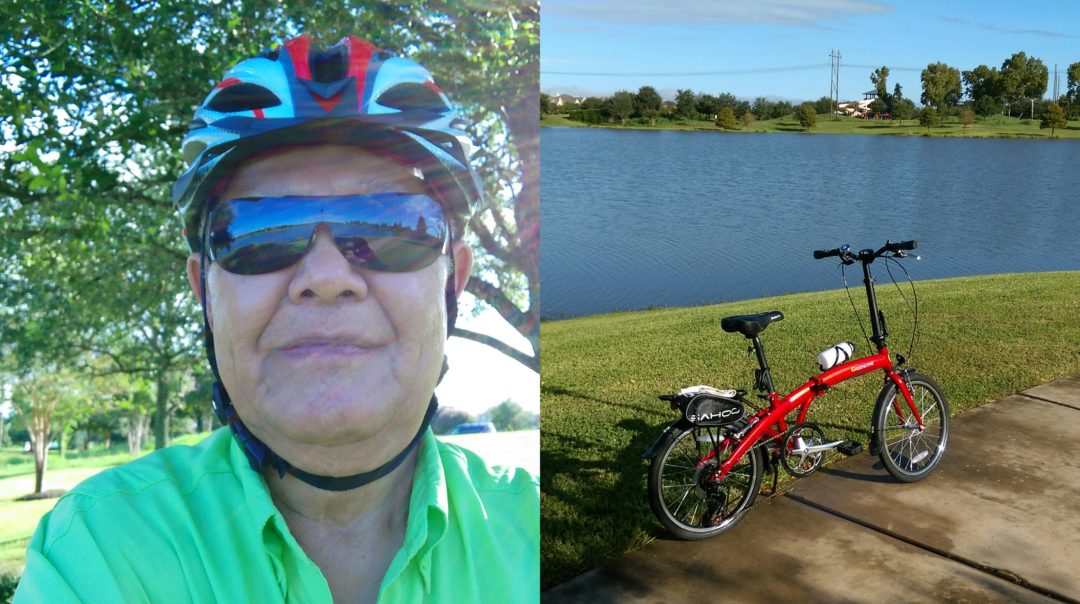
Biking in the lake behind my house
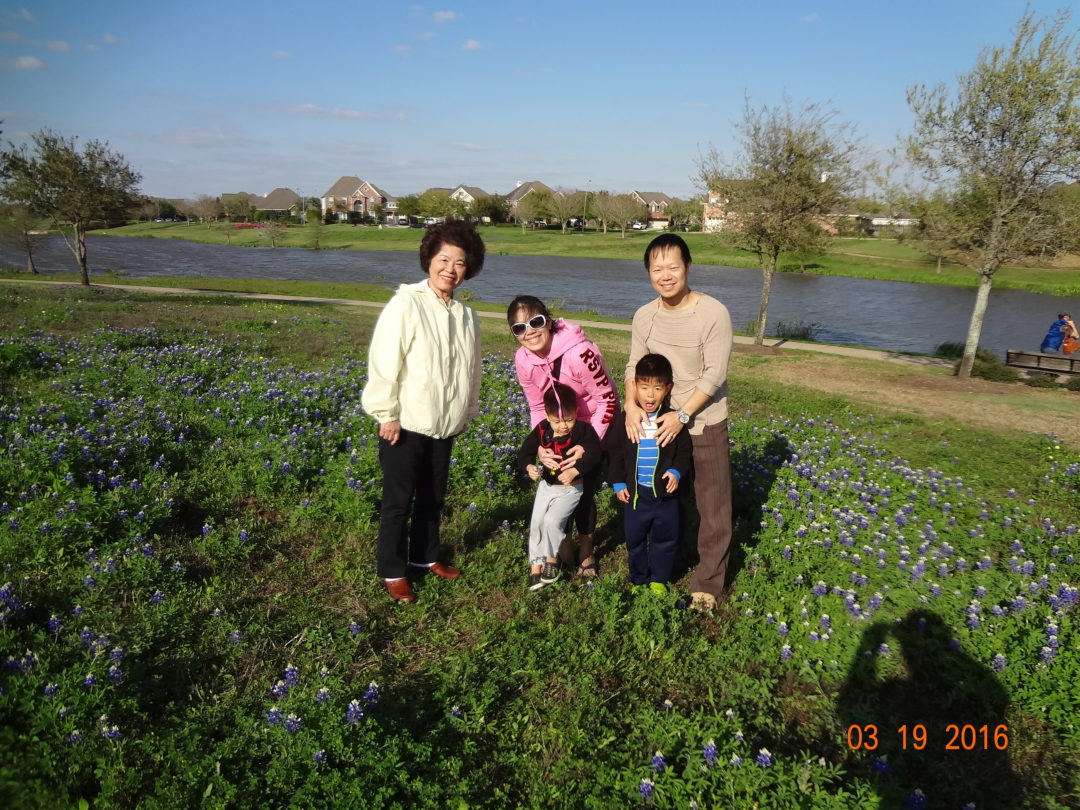
Family pictures taken in the lake behind my house
Source from呂理順 06/2016
Posted in 06/2016

